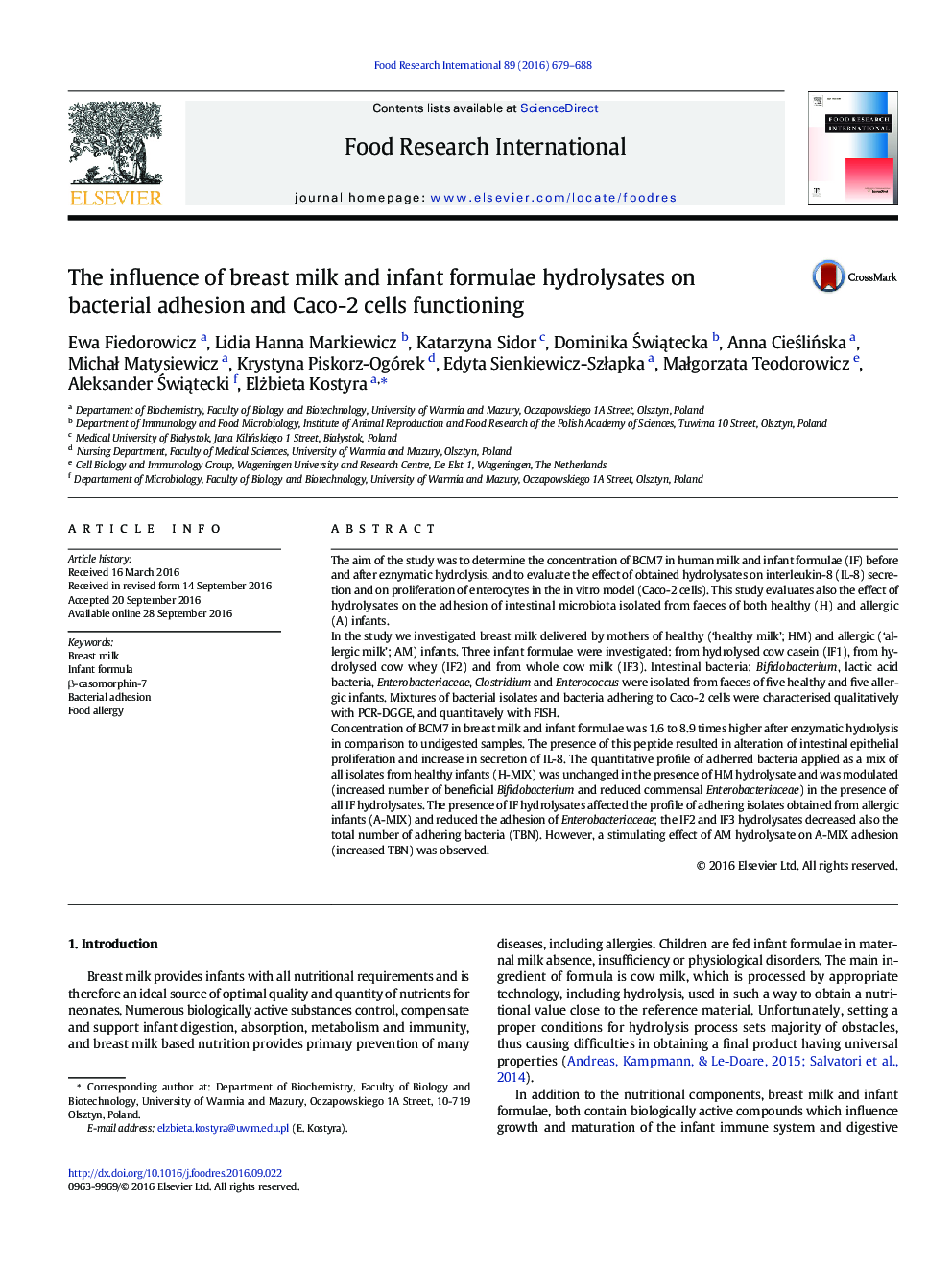| Article ID | Journal | Published Year | Pages | File Type |
|---|---|---|---|---|
| 6394893 | Food Research International | 2016 | 10 Pages |
â¢Enzymatic hydrolysis of milk protein increases causes an increase of BCM7 concentration.â¢BCM7 increases cause an increase of IL-8 secretion by intestinal epithelial cells.â¢Human milk hydrolysates of human milk did not alter quantitative profile of adhering bacteria.â¢IF hydrolysates stimulated adhesion of Bifidobacterium from healthy (H) infants.â¢IF hydrolysates reduced adhesion of enterobacteria from H and allergic infants.
The aim of the study was to determine the concentration of BCM7 in human milk and infant formulae (IF) before and after eznymatic hydrolysis, and to evaluate the effect of obtained hydrolysates on interleukin-8 (IL-8) secretion and on proliferation of enterocytes in the in vitro model (Caco-2 cells). This study evaluates also the effect of hydrolysates on the adhesion of intestinal microbiota isolated from faeces of both healthy (H) and allergic (A) infants.In the study we investigated breast milk delivered by mothers of healthy ('healthy milk'; HM) and allergic ('allergic milk'; AM) infants. Three infant formulae were investigated: from hydrolysed cow casein (IF1), from hydrolysed cow whey (IF2) and from whole cow milk (IF3). Intestinal bacteria: Bifidobacterium, lactic acid bacteria, Enterobacteriaceae, Clostridium and Enterococcus were isolated from faeces of five healthy and five allergic infants. Mixtures of bacterial isolates and bacteria adhering to Caco-2 cells were characterised qualitatively with PCR-DGGE, and quantitavely with FISH.Concentration of BCM7 in breast milk and infant formulae was 1.6 to 8.9 times higher after enzymatic hydrolysis in comparison to undigested samples. The presence of this peptide resulted in alteration of intestinal epithelial proliferation and increase in secretion of IL-8. The quantitative profile of adherred bacteria applied as a mix of all isolates from healthy infants (H-MIX) was unchanged in the presence of HM hydrolysate and was modulated (increased number of beneficial Bifidobacterium and reduced commensal Enterobacteriaceae) in the presence of all IF hydrolysates. The presence of IF hydrolysates affected the profile of adhering isolates obtained from allergic infants (A-MIX) and reduced the adhesion of Enterobacteriaceae; the IF2 and IF3 hydrolysates decreased also the total number of adhering bacteria (TBN). However, a stimulating effect of AM hydrolysate on A-MIX adhesion (increased TBN) was observed.
Graphical abstractDownload high-res image (91KB)Download full-size image
